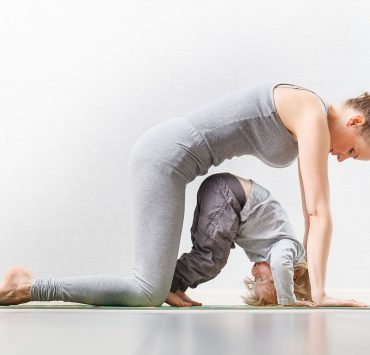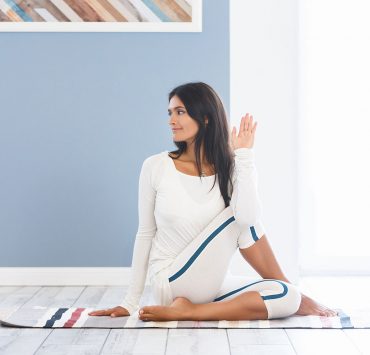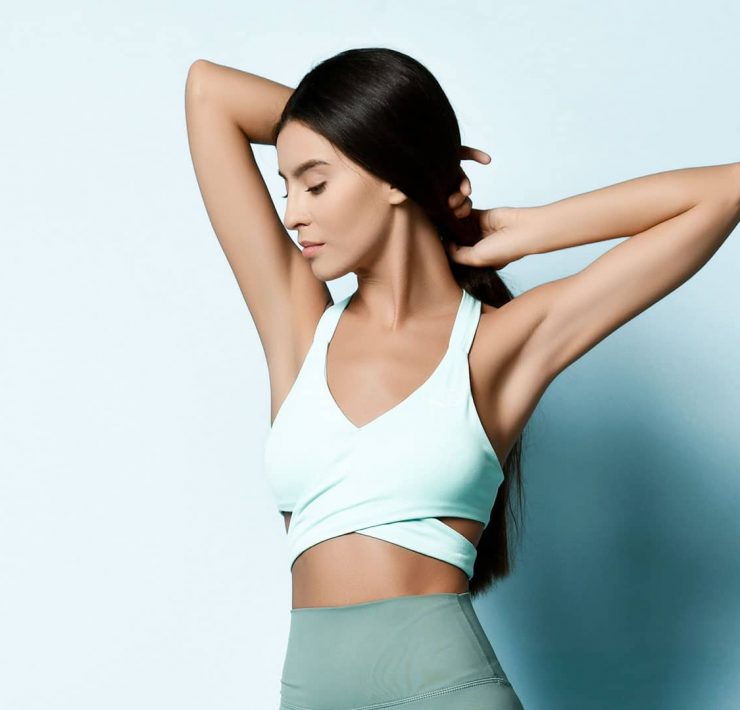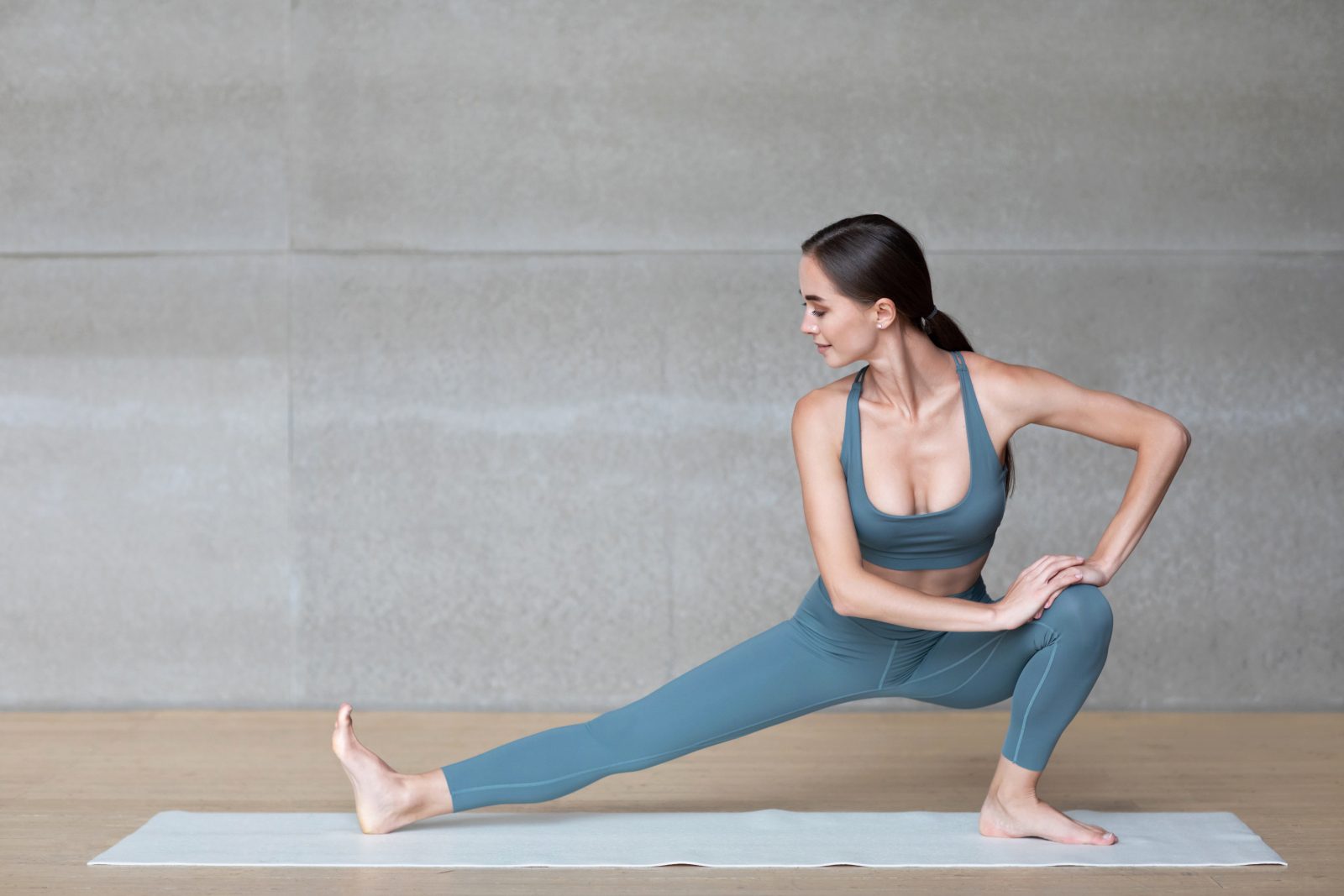
Former nutrition specialist Alexandra Mackenzie knows what it means to…
Like yin and yang, Sun Salutations too have an opposite. These are called Moon Salutations or in Sanskrit, Chandra Namaskar.
In yoga, typically you match your movements with your breath. This means that with each inhale and exhale, you move onto the next pose in the series. By connecting to the movement through your breath, you’re diving deeper into your body. This makes your body seamlessly flow through the sequence.
Moon Salutations build the feminine side of your body. They provide cooling calming energy. The series stretches and strengthens your physical body. It also opens up your hips and heart space.
While it isn’t as well known, the Moon Salutation provides many benefits for the entire body. It balances all seven of your chakras. But where did it come from? When’s the best time to practice? What is the sequence?
What is a Moon Salutation?
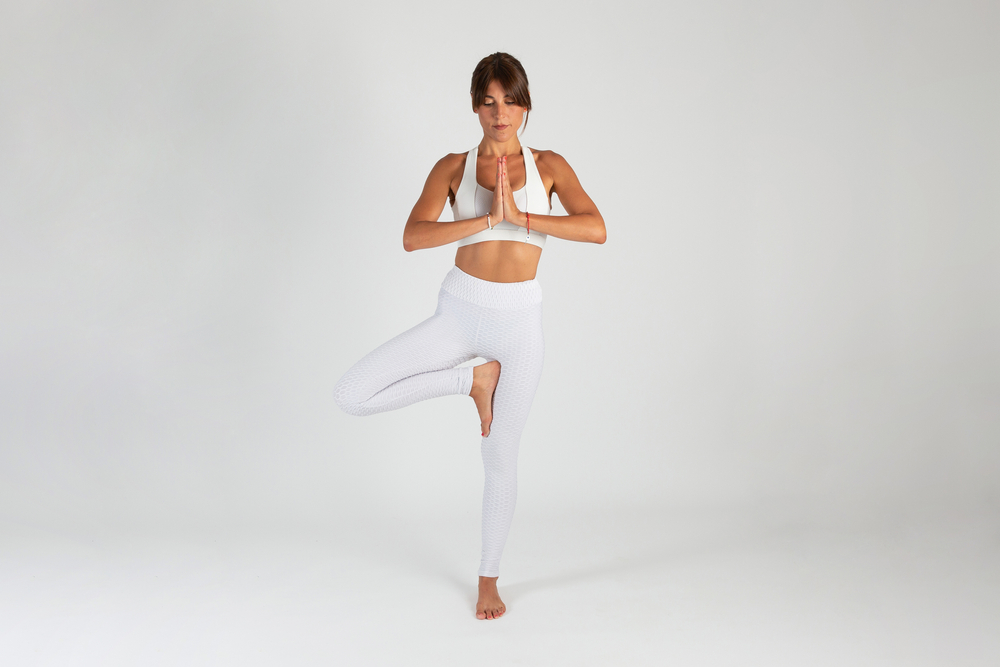
The Sun and Moon salutations are all about opposites. Solar energy is typically outwardly focused, warm, and active. When you complete Sun Salutations, take notice of the heat building up in your body. That’s one of the many purposes of the practice, to prep you for later poses.
On the other hand, lunar energy is inwardly focused, cool, and receptive. The moon is a “manifestation of the divine feminine force in nature”. In hatha yoga, this force resides within us. So naturally, the Moon Salutation is slower and deeper. It preps your body for rest.
The moon salutation is practiced with devotion and gratitude to the divine feminine. This turns the salutation into a full-body prayer to Shodashi. Shodashi is the goddess who presides over all phases of the moon.
The Moon Salutation was created to compliment the Sun Salutation. It honors the feminine body and rhythms. It was created in the late 1980s by a group of senior female teachers at the Kripalu Center.
Like the moon, the best time to practice the Moon Salutation is at night. Preferably when the moon is visible and on an empty stomach. Ashtanga tradition does not advise to practice during a full or new moon.
During a full moon, there is an overabundance of Prana which is your life force energy. During a new moon, there is an overabundance of Apana which is your life force of elimination.
Benefits

The benefits for Moon Salutations are vast, especially for such an unknown practice!
Physically, it stretches and strengthens the entire body. It elongates your spine and stretches the backs of your legs like your hamstrings. It strengthens your legs, arms, back muscles, and abdominals. It also opens your hips and your heart. Your respiratory, circulatory, and digestive system functions are not only increased but balanced.
Moving inside, the practice of Moon Salutations also balances your chakras. Your chakras are energy centers located throughout the body. They start at the root and end through the crown of your head.
Balancing the energies in your body is so important for every aspect of the health of your body. This isn’t just your physical and emotional body but also your spiritual and mental bodies.
Your first three chakras are Muladhara (root), Swadhishthana (sacral), and Manipura (solar plexus). These are stimulated through the hip openers and forward bends. The fourth and fifth chakras are Anahata, your heart, and Vishuddha, your throat. These are activated through the backbends and shoulder/arms opening. The sixth (Anja – brow) and seventh (Sahasrara – crown) chakras are sparked from the forward and side bends.
Stimulating all seven brings you closer to better all-around health.
Moon Salutations build the feminine side of your body. This improves fertility, balance, and stability. It also eases stress and anxiety while aiding in insomnia.
Moon Salutation
Let’s get into the sequence! Move through each pose with the inhales and exhales of your breath. If you’re craving a slower pace, take a full round of breath per pose before moving onto the next.
Inhale: Tadasana – Mountain Pose
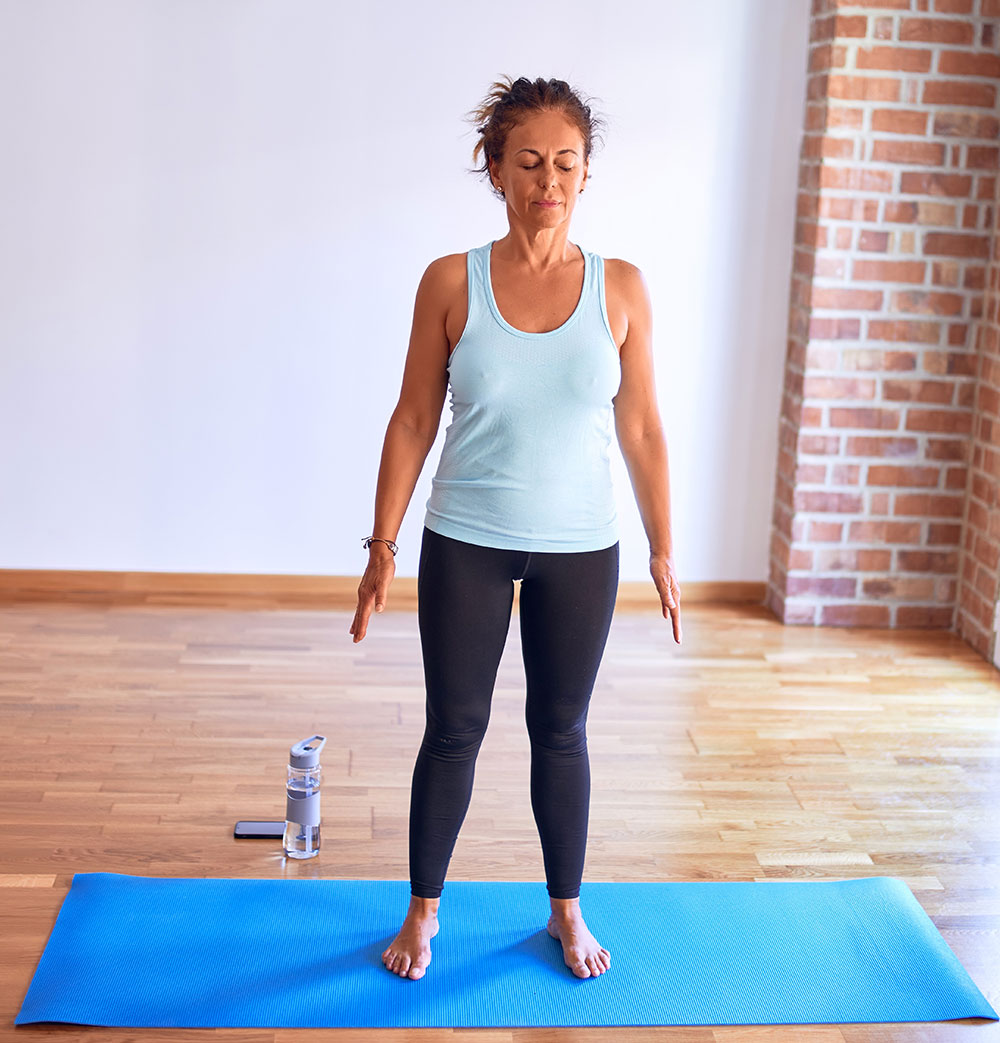
Tadasana is so much more than simply standing at the top of your mat. Take a few breaths here. Go through the anatomical checkpoints below. Do this before moving onto the next pose in the moon salutation sequence.
Start standing at the top of your mat with your feet hips-width distance apart and a slight bend in your knees. First, focus on your feet. Shift your weight into your heels as you lift and spread your toes. Set them back down. Engage and slightly internally rotate your quads, lifting at the knees.
Engage your abs and lengthen your tailbone. Roll your shoulder blades back. Lift your chest and spread through your collarbones. Keep your chin parallel with the floor, gaze softened. Your hands are by your sides, palms facing forward.
Hold for at least three breaths to start.
Then, hook your thumbs, spreading your fingers wide. Inhale as you bring your arms over your head. Move past a neutral spine lifting up and into a small backbend.
Exhale: Uttanasana – Standing Forward Bend Pose
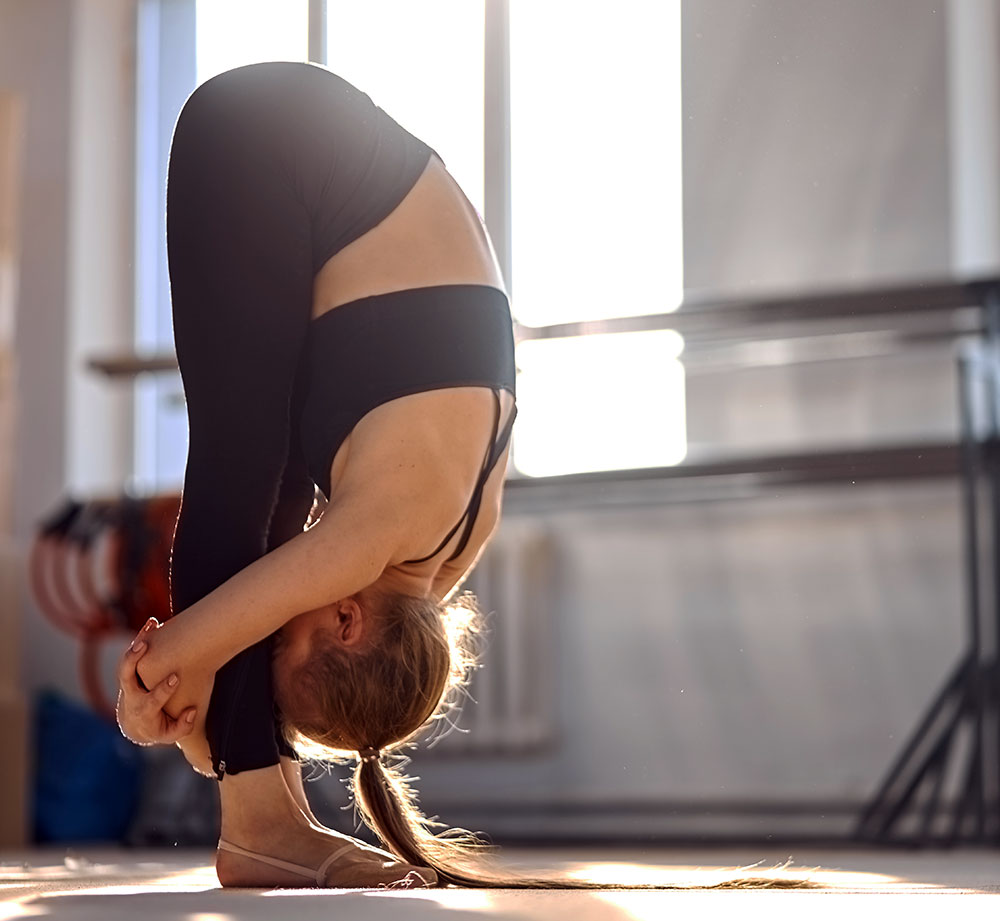
As you exhale, bring your arms back around, hinging at the hips into a standing forward fold. Release your hands to the mat and bring your nose towards your shins. Feel the stretch in your hamstrings.
Inhale: Anjaneyasana – Low Lunge Pose
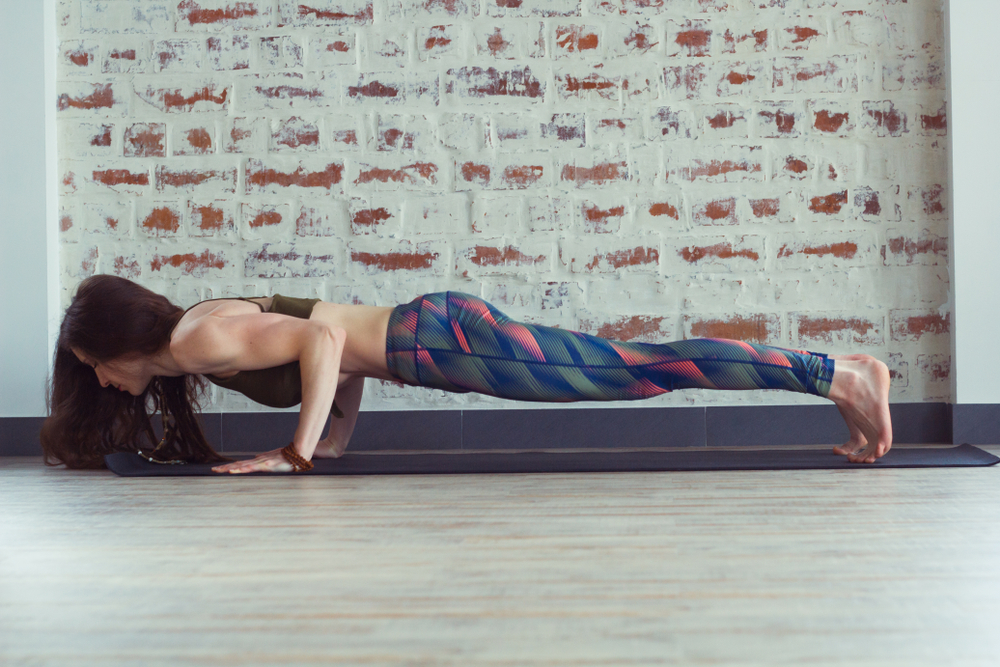
Plant your hands on the mat as you step your right foot back into a low lunge. Keep the right knee active, as if you’re trying to touch it to the ceiling. Reach your arms back over your head, palms facing in, towards each other.
Exhale: Adho Mukha Svanasana – Downward-Facing Dog Pose
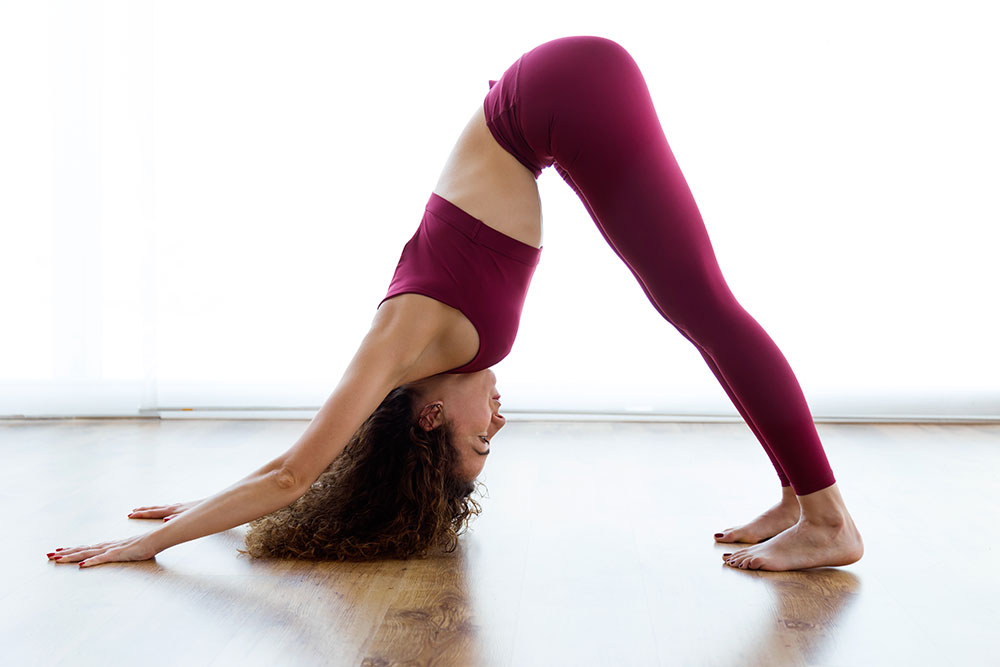
Bring your arms back to the ground, framing your right foot. Press the ground away as you step your left foot back to meet your right in downward-facing dog. Straighten your legs but keep a slight bend in your knees. Slightly internally rotate your thighs. Send your heels toward the floor.
Optional Round of Breath: Balasana – Child’s Pose
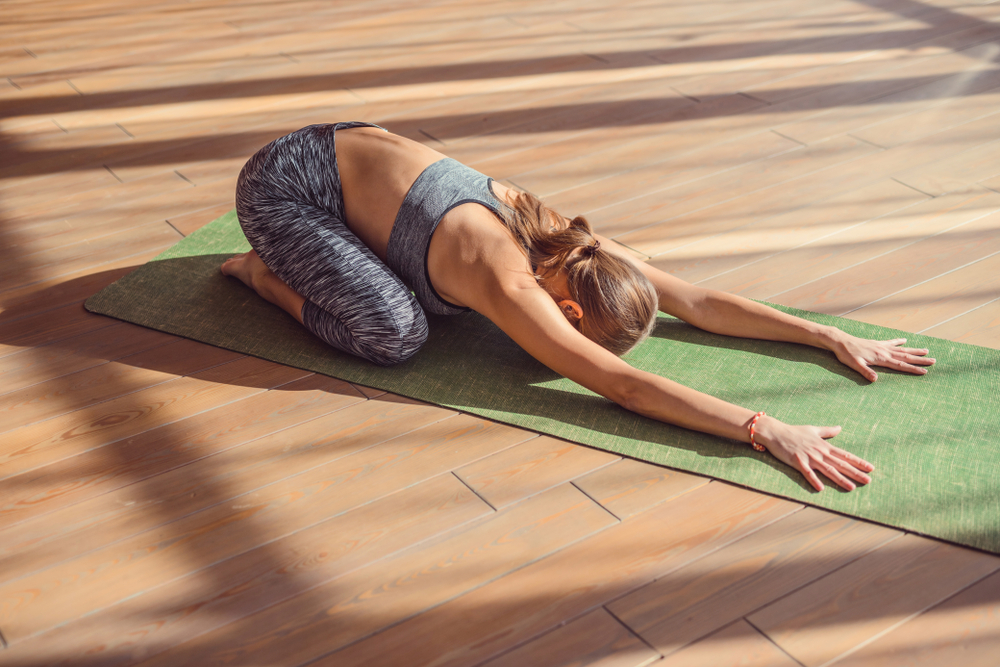
Inhale, dropping your knees to tabletop position. Bring your big toe mounds to touch as you open your knees to the width of the mat. Crawl your hands forward as you send your heart and forehead towards the mat.
Exhale, plant your elbows in the ground as you bring your hands into prayer. Rotate your arms bringing your prayer hands to the back of your neck. Sink deeper.
Inhale: Phalakasana – Plank Pose
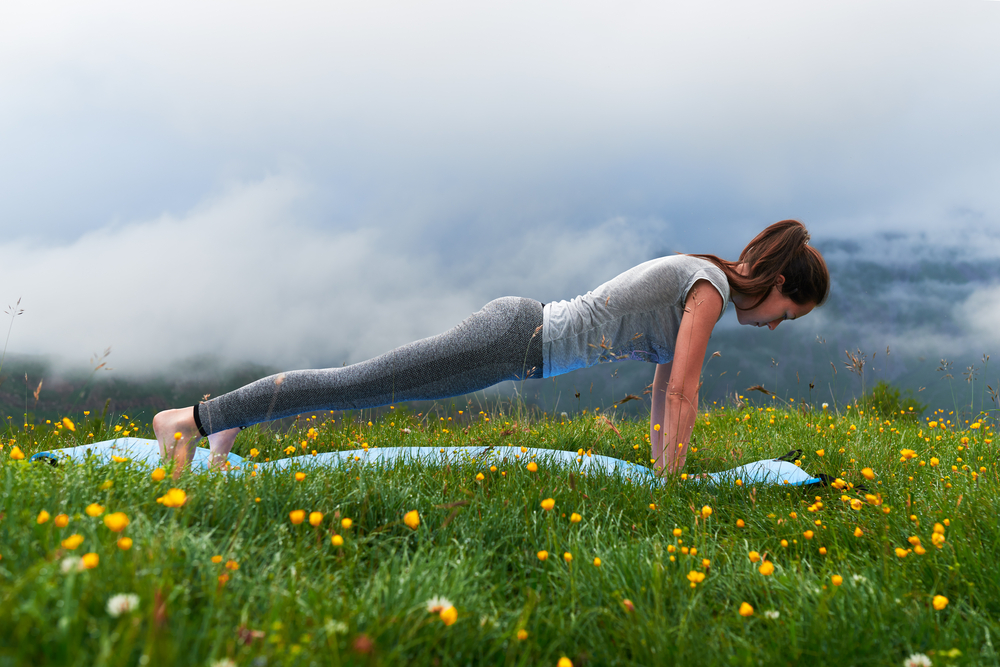
Inhale, shift your weight forward from downward-facing dog into plank pose. Keep your toes tucked and your wrists directly under your shoulders. Engage your core, creating a straight line from the tip of your head to your heels.
If coming from Balasana, plant your hands under your shoulders. Then, straighten your legs and shift forward into plank pose.
Exhale: Ashtanga Namaskara – Knees-Chest-Chin Pose or Chaturanga Dandasana – Four-Limbed Staff Pose
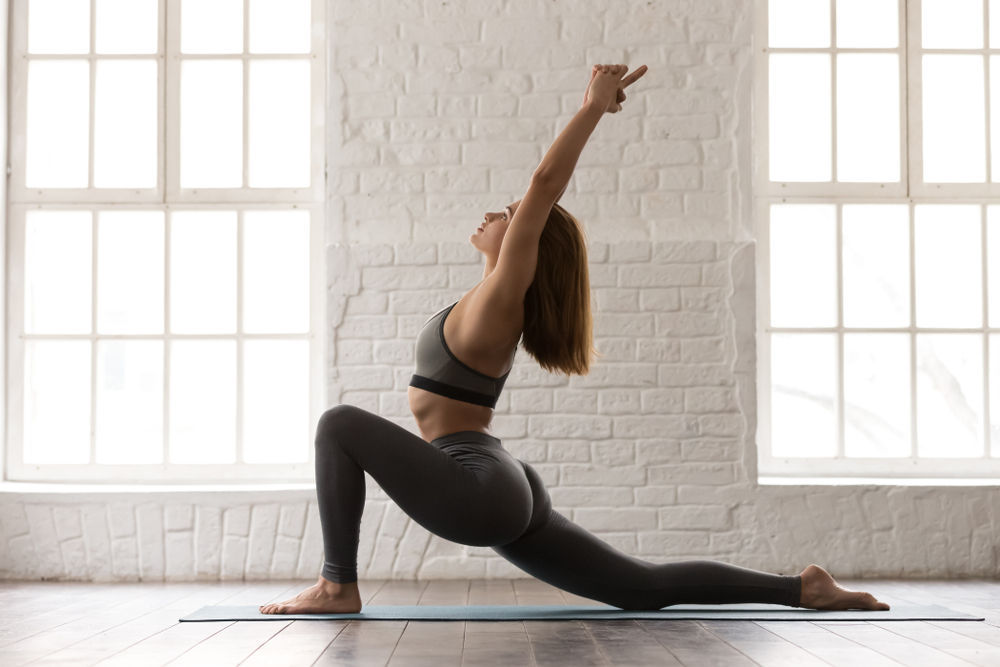
Ashtanga Namaskara: Drop your knees to the ground as you lower your chest and chin to the mat. Remember, this pose is a backbend!
Chaturanga Dandasana: keep your elbows tucked in as you lower towards the ground. Stop when your elbows reach 90-degree angles. Your body will remain engaged and parallel to the floor.
Inhale: Bhujangasana – Cobra Pose or Urdhva Mukha Svanasana – Upward-Facing Dog Pose
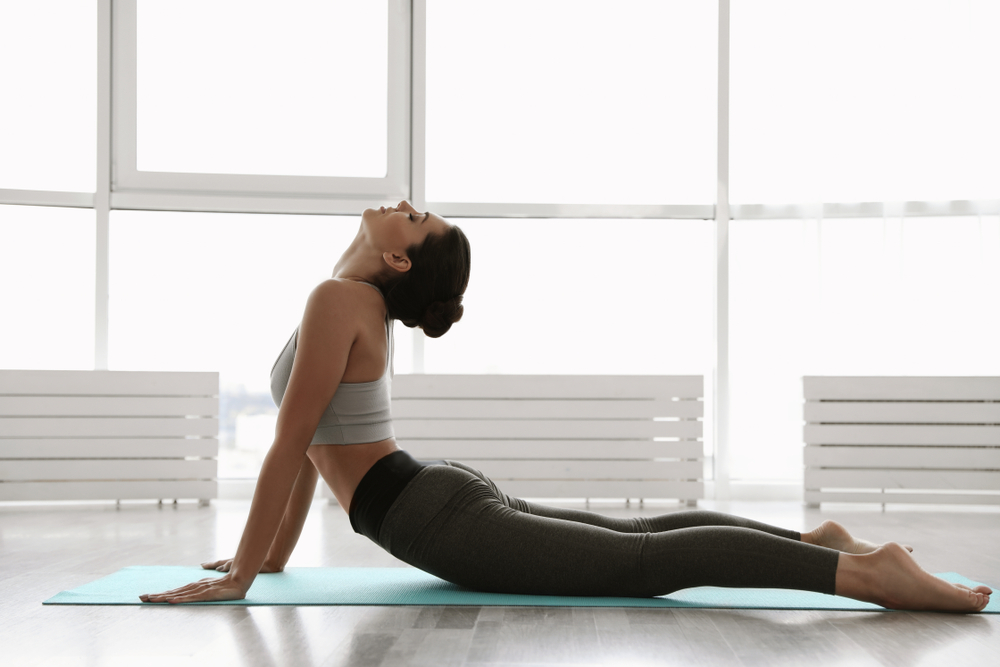
Slide forward from Ashtanga Namaskara so you’re lying on your stomach. Untuck your toes. Press your hands into the mat as you straighten your arms coming into this backbend. Keep a slight bend in your elbows, don’t lock them out. Roll your shoulders back as you spread wide through your collarbones.
Untuck your toes. For Urdhva Mukha Svanasana, press through the tops of your feet. Lift your quadriceps off the ground into the backbend.
Exhale: Adho Mukha Svanasana – Downward-Facing Dog
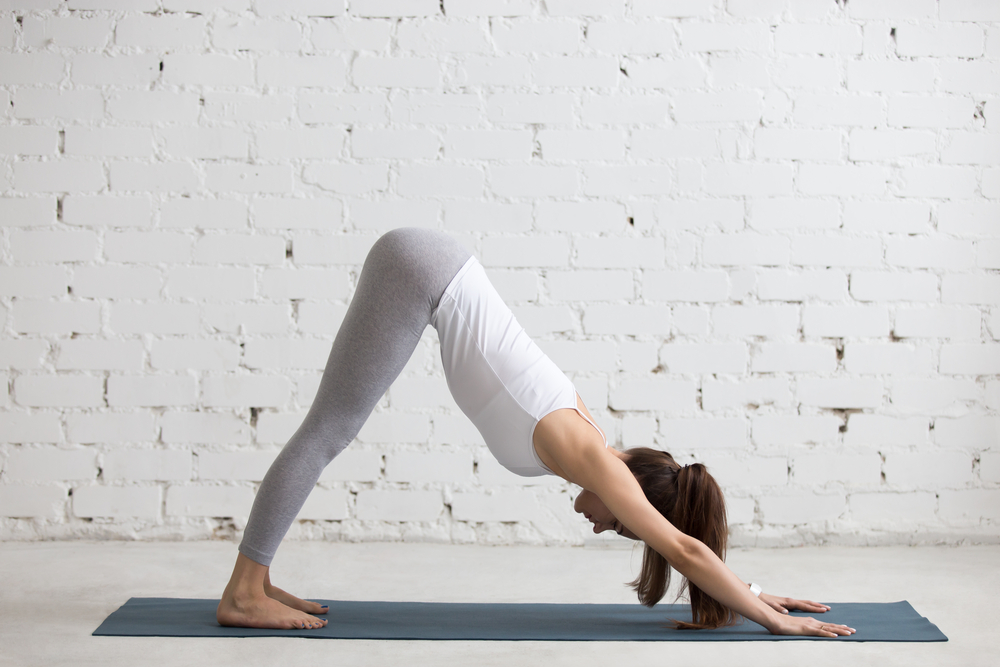
Tuck your toes as you send your hips up and back into Downward-Facing Dog.
Inhale: Ashta Chandrasana – High Lunge Pose
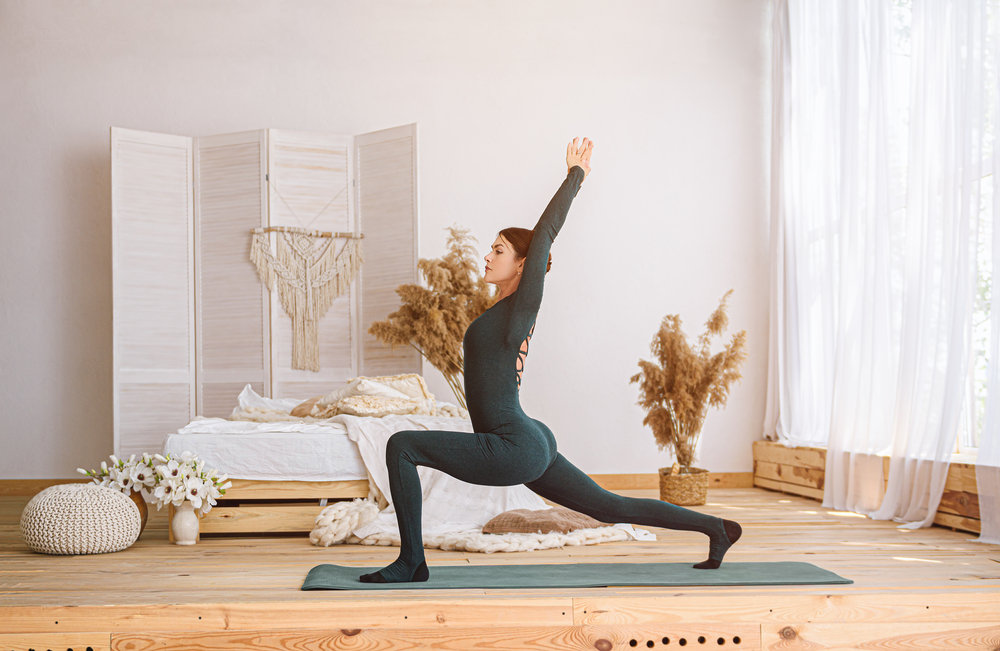
Step your right foot forward between your hands, your knee at a 90-degree angle. Sweep your arms over your head into a High Lunge, palms facing each other.
Exhale: Uttanasana – Standing Forward Bend Pose
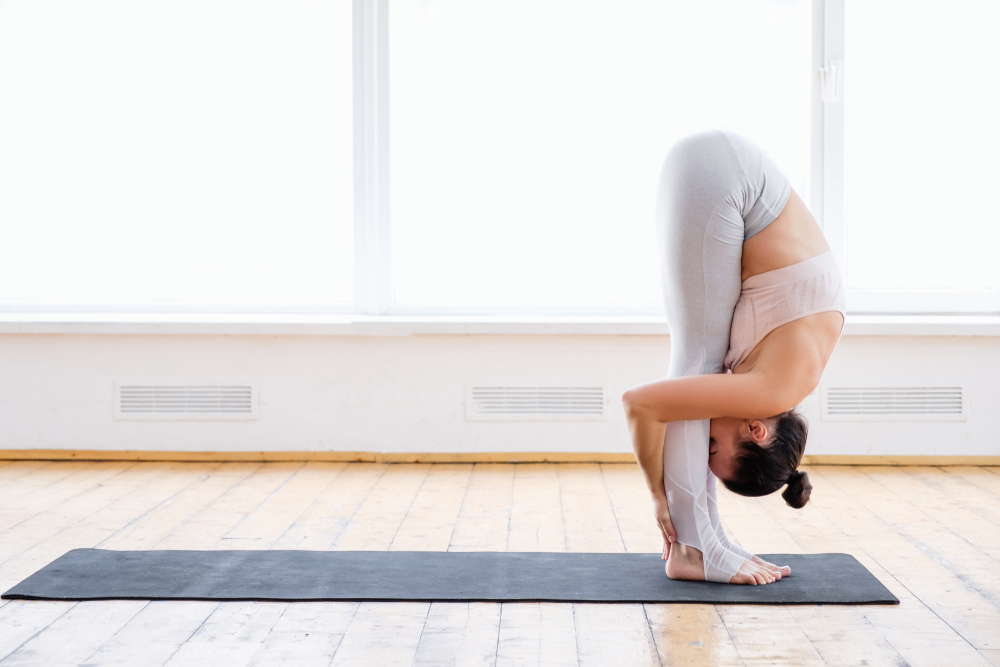
Step your left foot forward to meet your right, hips-width distance apart. Interlace your fingers behind your back. Hinge at your hips. Drop your hands over your head while sending your forehead towards your shins.
Inhale: Urdhva Hastasana – Raised Arms Pose
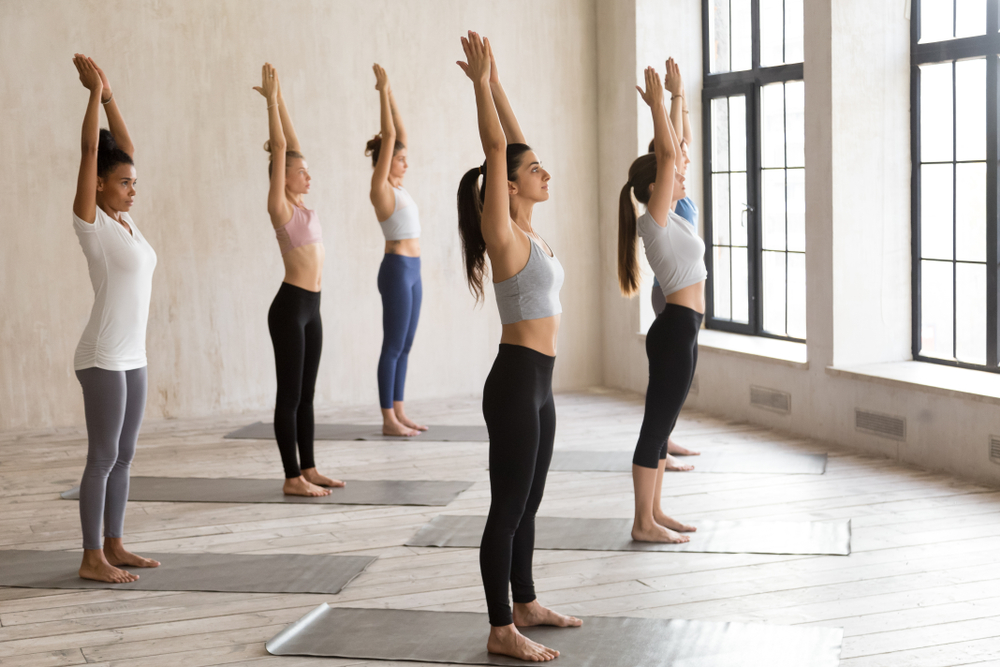
Release your hands and lock your thumbs. As you inhale, sweep your hands up and over your head into a standing backbend.
Exhale: Tadasana – Mountain Pose
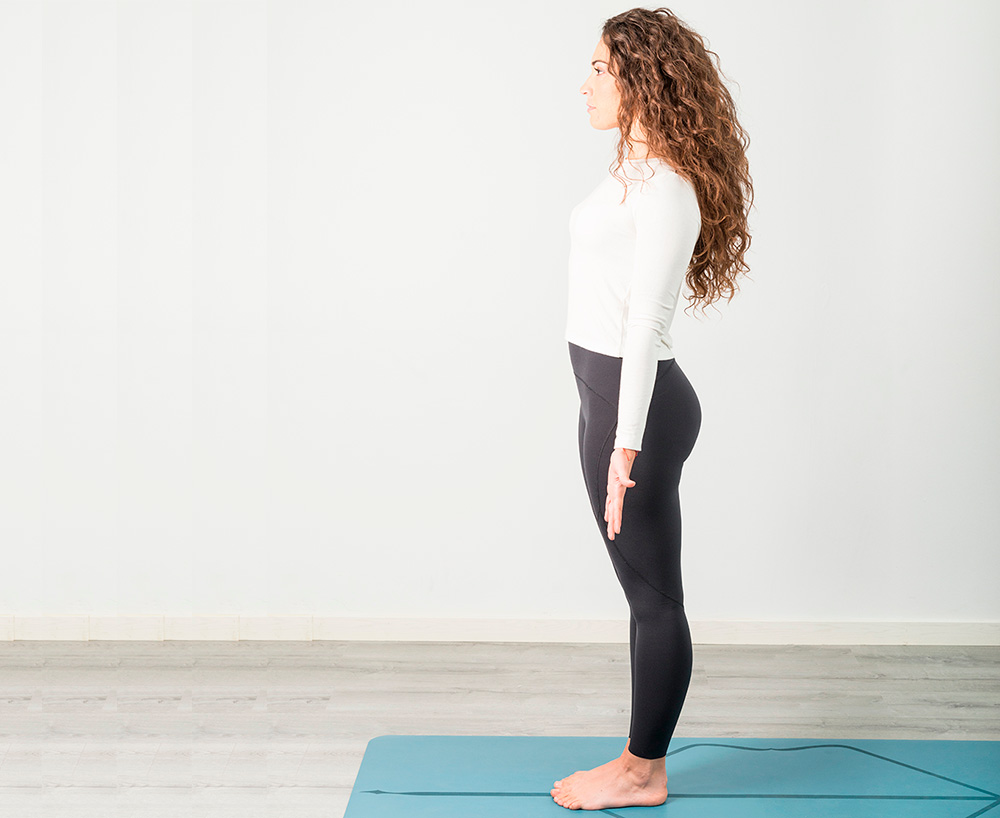
Return your spine to neutral as you release your hands back to your sides, palms facing forward.
Repeat sequence on the left side.
Then, repeat on each side for a total of three full Moon Salutations.
Adding to Your Practice
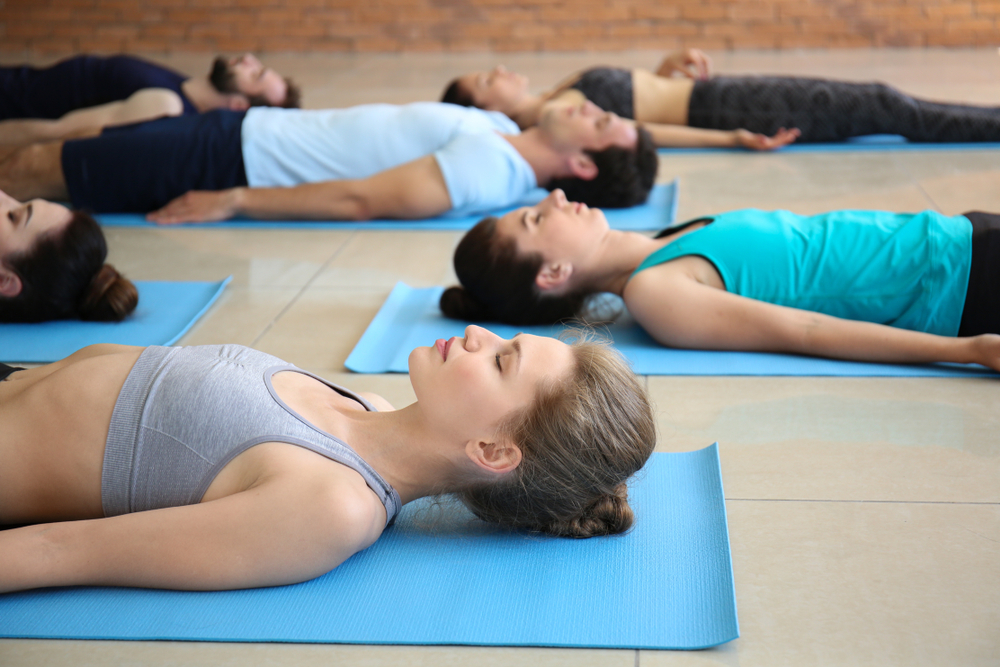
The Moon Salutation compliments the Sun Salutation, the better known of the salutations.
This sequence was created by senior female teachers. It honors the feminine body while stretching and strengthening the entire body. It stimulates and balances all seven of your chakras and can ease stress and anxiety.
Moon Salutations matches movement with your breath. It guides you through hip openers, backbends, and forward folds. There are a few variations that you can take that best fit your body at the time of your practice. What your body needs one night may differ from the next and that’s ok! Practice the poses that your body needs at that time.
The optional Balasana (Child’s Pose) gives you grounding and shoulder rotation. There are 2 levels of difficulty. The first option is Ashtanga Namaskara – Knees, Chest, Chin Pose. The second and more challenging is Chaturanga Dandasana – Four-Limbed Staff Pose.
Moon Salutations are best practiced in the evenings. Try adding to your practice tonight!
What's Your Reaction?
Former nutrition specialist Alexandra Mackenzie knows what it means to support the body and mind through food. She’s passionate about sharing her wealth of knowledge with anyone willing to listen.






